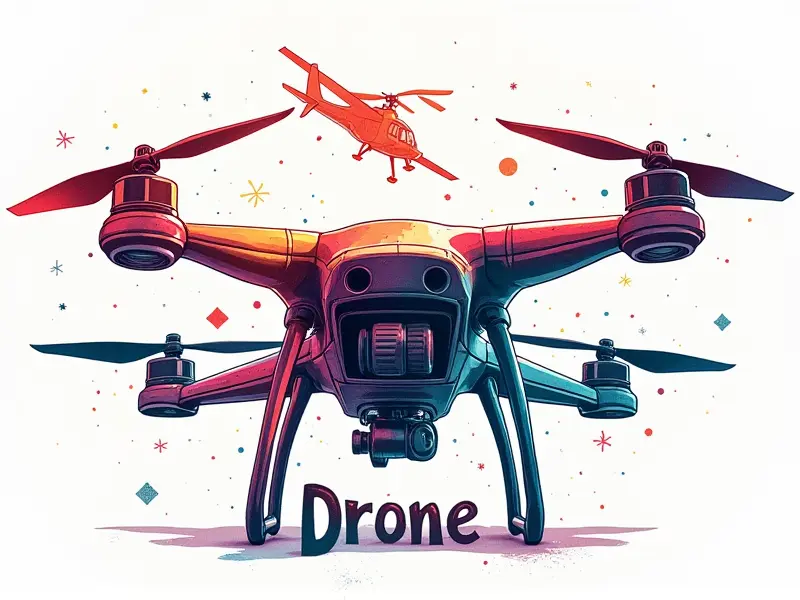DIY drone transmitter guide

DIY Drone Transmitter Guide: Build Your Own Custom Control System
Welcome to the world of DIY drone transmitters! Whether you're an experienced RC enthusiast or just starting out, crafting your own transmitter can be both fun and rewarding. This guide will walk you through every step of building a custom drone control system tailored to your needs.
Build Your Own Drone TX in 5 Steps
Building your DIY drone transmitter is easier than it sounds. Follow these five steps for a smooth setup:
- Select the Right Components: Choose high-quality transmitters, receivers, and antennas that match your drone's specifications.
- Configure Your Radio System: Set up your radio module with the appropriate frequencies and protocols.
- Install Firmware and Software: Load the necessary firmware onto your transmitter for optimal performance.
- Test and Calibrate: Ensure everything works seamlessly before taking to the skies.
- Maintain Your TX: Regularly check components and update software as needed.
DIY Drone Transmitter Setup Guide
The setup process involves several key steps. Here’s a detailed breakdown:
Selecting Components
- Transmitter: Opt for lightweight, durable transmitters with good range and sensitivity.
- Receiver: Choose receivers compatible with your transmitter's protocol (e.g., DSMX, Spektrum).
- Antennas: Use high-quality antennas to maximize signal strength and reliability.
Configuring Your Radio System
- Frequencies: Set your transmitter to the correct frequency band (e.g., 2.4GHz).
- Protocols: Configure protocols such as DSMX, Spektrum FASST, or OpenTX for seamless communication.
Loading Firmware and Software
- Firmware: Install the latest firmware updates from manufacturers like FrSky or Taranis.
- Software: Use software tools to customize your transmitter's settings (e.g., OpenTX Companion).
Craft Your Perfect RC TX from Scratch
Creating a custom drone control system involves selecting components and configuring them for optimal performance. Here’s how you can do it:
Selecting Components
- Transmitter Body: Choose a transmitter body that fits your hand comfortably.
- Switches and Pots: Add switches, pots, and other controls based on your flying style.
- Display Module: Install LCD or OLED displays for better visibility.
Configuring Your TX
- Channels: Assign channels to specific functions (e.g., throttle, yaw).
- Mixes and Conditions: Set up mixes and conditions for advanced control.
Beginner's Guide to DIY Drone TX
If you're new to building a drone transmitter, this guide will help you get started. Here’s what you need to know:
Selecting Components
- Transmitter Model: Choose from popular models like FrSky Taranis or Spektrum DX9.
- Batteries: Use rechargeable batteries for longer flight times and convenience.
Loading Firmware and Software
- Firmware Installation: Follow manufacturer instructions to install firmware updates.
- Software Configuration: Customize your transmitter using software tools like OpenTX Companion.
Make Your Custom Drone Transmitter
Making a custom drone transmitter involves several steps. Here’s how you can do it:
Selecting Components
- Transmitter Body: Choose a body that fits your hand comfortably and is durable.
- Receiver: Select a receiver compatible with your transmitter's protocol.
Loading Firmware and Software
- Firmware Updates: Keep firmware up-to-date for optimal performance.
- Software Customization: Use software tools to customize settings (e.g., mixes, conditions).
DIY TX for Drones: A Step-by-Step Guide
This step-by-step guide will help you build your custom drone transmitter. Follow these steps carefully:
Selecting Components
- Transmitter Model: Choose from popular models like FrSky Taranis or Spektrum DX9.
- Batteries and Chargers: Use rechargeable batteries for longer flight times.
Loading Firmware and Software
- Firmware Updates: Install the latest firmware updates from manufacturers.
- Software Customization: Customize your transmitter using software tools like OpenTX Companion.
Create a Custom Drone Control TX
Crafting a custom drone control system involves several key steps. Here’s how you can do it:
Selecting Components
- Transmitter Body: Choose a body that fits your hand comfortably and is durable.
- Receiver: Select a receiver compatible with your transmitter's protocol (e.g., DSMX).
Loading Firmware and Software
- Firmware Updates: Keep firmware up-to-date for optimal performance.
- Software Customization: Use software tools to customize settings (e.g., mixes, conditions).
Build Your Own Drone Transmitter
Building your own drone transmitter is a rewarding experience. Here’s how you can do it:
Selecting Components
- Transmitter Model: Choose from popular models like FrSky Taranis or Spektrum DX9.
- Batteries and Chargers: Use rechargeable batteries for longer flight times.
Loading Firmware and Software
- Firmware Updates: Install the latest firmware updates from manufacturers.
- Software Customization: Customize your transmitter using software tools like OpenTX Companion.
Craft Your Perfect Drone TX
Crafting a custom drone control system involves several steps. Here’s how you can do it:
Selecting Components
- Transmitter Body: Choose a body that fits your hand comfortably and is durable.
- Receiver: Select a receiver compatible with your transmitter's protocol (e.g., DSMX).
Loading Firmware and Software
- Firmware Updates: Keep firmware up-to-date for optimal performance.
- Software Customization: Use software tools to customize settings (e.g., mixes, conditions).
Conclusion
Building your own custom drone transmitter is a rewarding experience that enhances your flying capabilities. By selecting the right components and configuring them properly, you can create a control system tailored to your needs.

